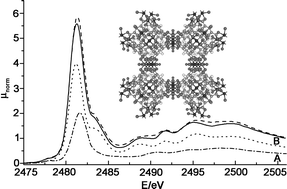Sulfate formation on SOx trapping materials studied by Cu and S K-edge XAFS
Abstract
The elementary steps during oxidative chemisorption of SO2 by a novel composite material consisting of highly disordered

* Corresponding authors
a
Department of Chemistry, Technische Universität München, Lichtenbergstr. 4, Garching, Germany
E-mail:
Johannes.lercher@ch.tum.de
Fax: +49 89 289 13544
Tel: +49 89 289 13500
The elementary steps during oxidative chemisorption of SO2 by a novel composite material consisting of highly disordered

 Please wait while we load your content...
Something went wrong. Try again?
Please wait while we load your content...
Something went wrong. Try again?
H. Dathe, A. Jentys and J. A. Lercher, Phys. Chem. Chem. Phys., 2005, 7, 1283 DOI: 10.1039/B419077G
To request permission to reproduce material from this article, please go to the Copyright Clearance Center request page.
If you are an author contributing to an RSC publication, you do not need to request permission provided correct acknowledgement is given.
If you are the author of this article, you do not need to request permission to reproduce figures and diagrams provided correct acknowledgement is given. If you want to reproduce the whole article in a third-party publication (excluding your thesis/dissertation for which permission is not required) please go to the Copyright Clearance Center request page.
Read more about how to correctly acknowledge RSC content.
 Fetching data from CrossRef.
Fetching data from CrossRef.
This may take some time to load.
Loading related content
